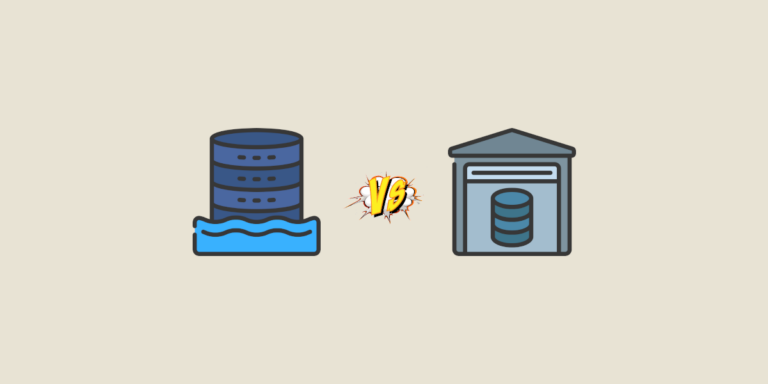In the digital world, Data Lakes and Data Warehouses are two widely used solutions for storing data. However, their advantages and uses are often confused. Knowing how to distinguish between them is therefore essential, as they meet different objectives that require different resources and skills. A data lake may be suitable for one company, while a data warehouse may be more appropriate for another. In this article, you'll learn the difference between these two terms, what their advantages are and what they excel at. This will make it easier for you to make your choice.
What is a Data Lake?
A data lake is a storage repository for large quantities of structured, unstructured or semi-structured data. All types of data can be stored in their native format. As in a real lake, the data is drawn from different sources in real time.
This type of platform poses no constraints in terms of file size or category. It enables high-performance data analysis and native integration.
Different types of data analysis can be carried out, such as Big Data processing, real-time analysis, Machine Learning or the production of dashboards and data visualizations.
Within the data lake, each piece of data is assigned a unique identifier. Each piece of data is associated with a set of metadata.
The architecture is non-hierarchical, unlike that of a data warehouse.

What is a data warehouse?
A data warehouse is a platform used to collect and analyze data from multiple, heterogeneous sources. It occupies a central position within a Business Intelligence system.
This platform marries several technologies and components to exploit data.
It can store large volumes of data, as well as query and analyze it. The aim is to transform raw data into useful information, and make it available and accessible to users.
A data warehouse is generally separate from a company’s operational database. It enables users to draw on historical and current data to make better decisions.

What are the differences between these two solutions?
Although the Data Lake and Data Warehouse are similar because they are storage solutions, they are very different in several respects:
Individual use
Firstly, these two solutions are used in different fields. Data lakes are mainly found in healthcare, education, transport and artificial intelligence.
In these fields, the Data Lake is very useful for its ability to store and analyze massive quantities of unstructured data from different sources.
As for the Data Warehouse, it is widely used in the financial, aviation and public sectors. Every day, these sectors generate thousands of pieces of data distributed across different structures and architectures, a storage mode more suited to the Data Warehouse.
Data warehousing facilitates decision-making, enabling data to be sorted efficiently and made more usable. This technology is particularly useful for machine learning, unlike the data lake, which is more suitable for Deep Learning.
Data processing
In a data warehouse, data is stored for a specific purpose, a project or model training. Each piece of data has its own importance, and will be used to define the outcome of the project.
The information stored in a Data Lake is not always intended to be used for a specific purpose. It can be used in the near future and often constitutes a consecutive database, available when the need arises.
Access to stored data
When it comes to accessing data from a Data Lake, it’s very easy to extract or modify data. The data scientists who manipulate it have very few restrictions.
Data warehouses, on the other hand, are complex storage spaces where not all modifications are permitted. Despite efficient data warehousing and processing, modifying data requires very costly resources.
The technologies used
You’d think that since both solutions are storage units, they would use the same technology, but no. To build a data lake and process it, data managers mainly turn to the Hadoop custom solution. With its Kafka, Spark-Streaming and Storm offerings, it enables data scientists to process data before introducing it into the Data Lake.
NoSQL and cloud solutions such as Google Cloud Platform or Amazon Web Services are also on the list of technologies for managing Data Lakes.
Data warehouse management can be achieved using a number of proprietary or open source solutions: Ab Initio Software, Amazon Redshift, AnalytiX DS, CodeFutures. These technologies are essentially based on the Cloud and the SQL language.

Which solution is best?
The choice between a Data Lake and a Data Warehouse depends on your company’s specific needs. If your company wants to explore varied, unstructured and constantly evolving data, a Data Lake may be the best option.
On the other hand, if your priority is to obtain fast, accurate analyses from structured data, a Data Warehouse would be more appropriate.
In fact, many companies are adopting a hybrid approach, using both Data Lakes and Data Warehouses to leverage the benefits of both solutions. Another trend to emerge in recent years is the use of Data Lakehouse, which aims to combine the Data Lake with the data management capabilities of a Data Warehouse.

Now you know the difference between a data lake and a data warehouse, and which one is best for your data project.










